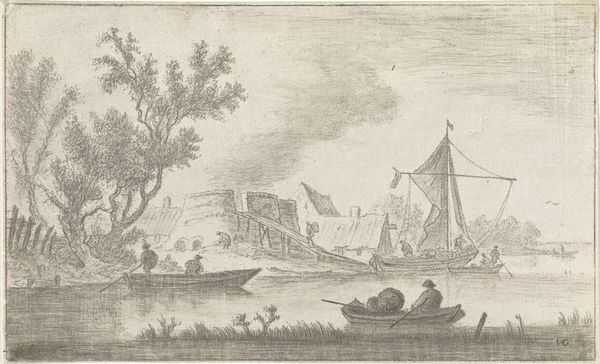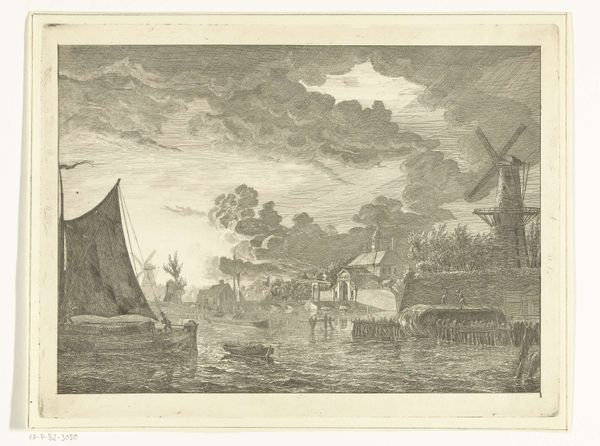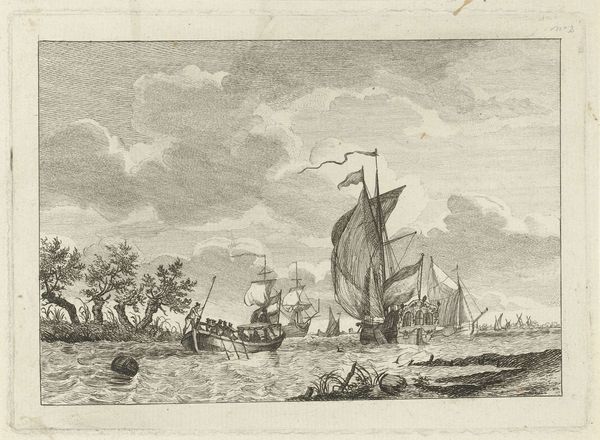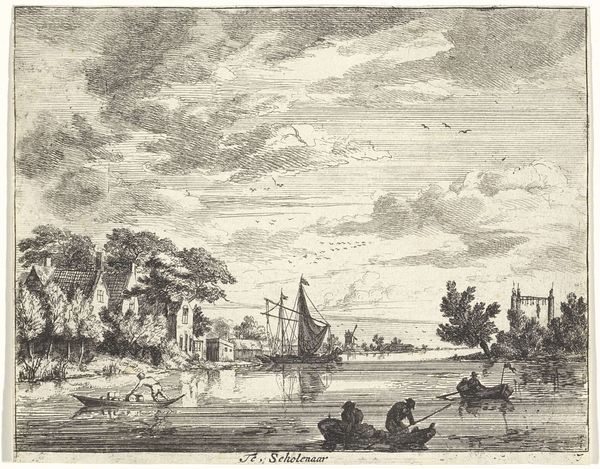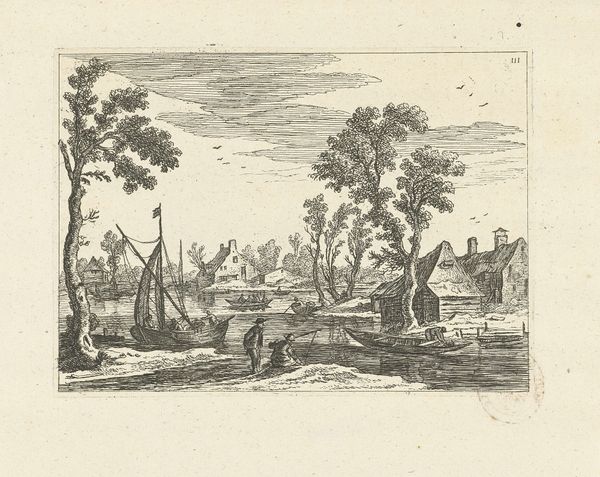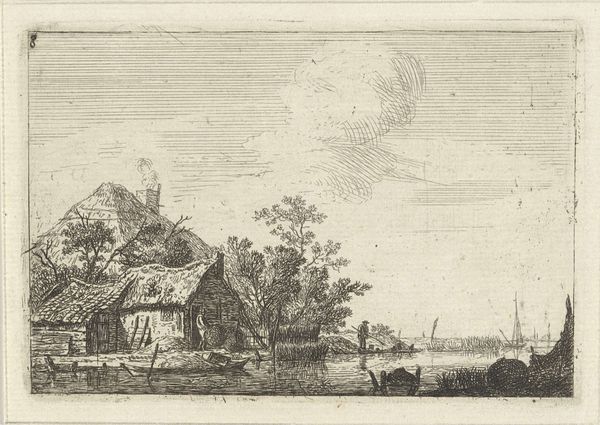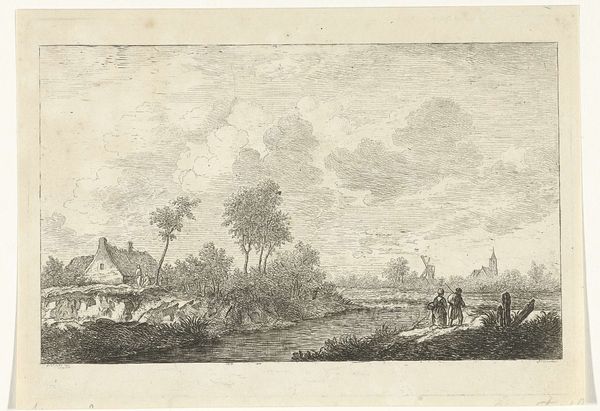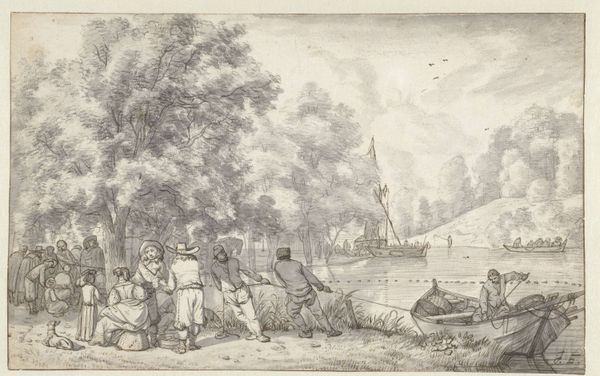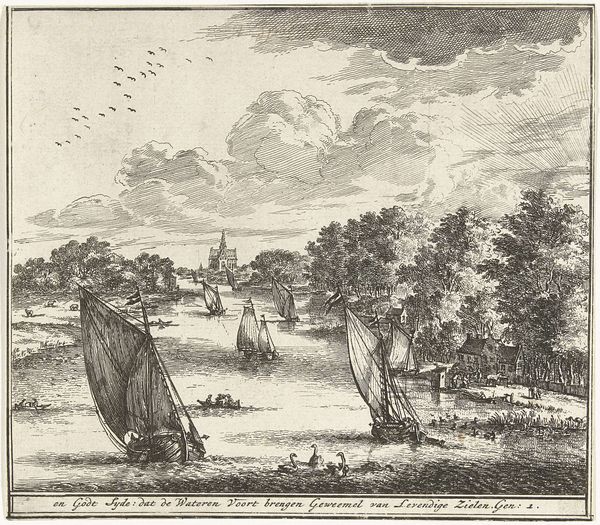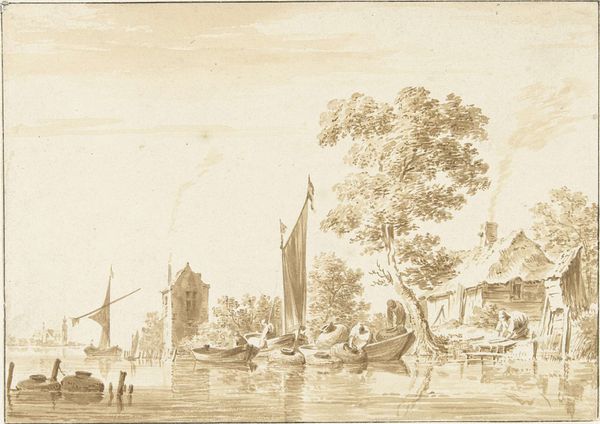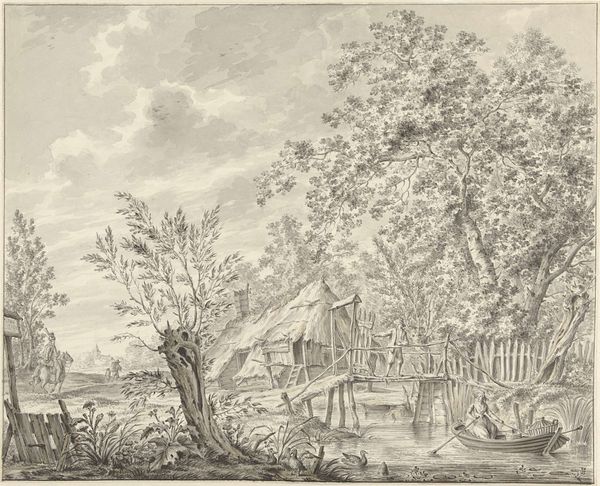
Dimensions: height 153 mm, width 207 mm
Copyright: Rijks Museum: Open Domain
Anthonij van der Haer made this river landscape with a haystack using etching, a printmaking technique where acid is used to cut into a metal plate, around the 18th century. Look closely and you can see how the etched lines create different effects. Fine, light lines suggest the soft, feathery foliage of the trees and the subtle ripples on the water's surface, while denser, deeper lines give form to the buildings and the haystack. Etching allowed van der Haer to capture a sense of light and atmosphere. But it's not just a pretty picture, it also tells a story. See the workers in the boat, likely transporting goods along the river? The haystack itself represents the agricultural labor of the time. Consider the work involved in producing the food depicted here and the social context of rural life in the 1700s. Ultimately, this piece reminds us that even seemingly simple landscapes are shaped by materials, techniques, and the human labor that transforms them.
Comments
No comments
Be the first to comment and join the conversation on the ultimate creative platform.
